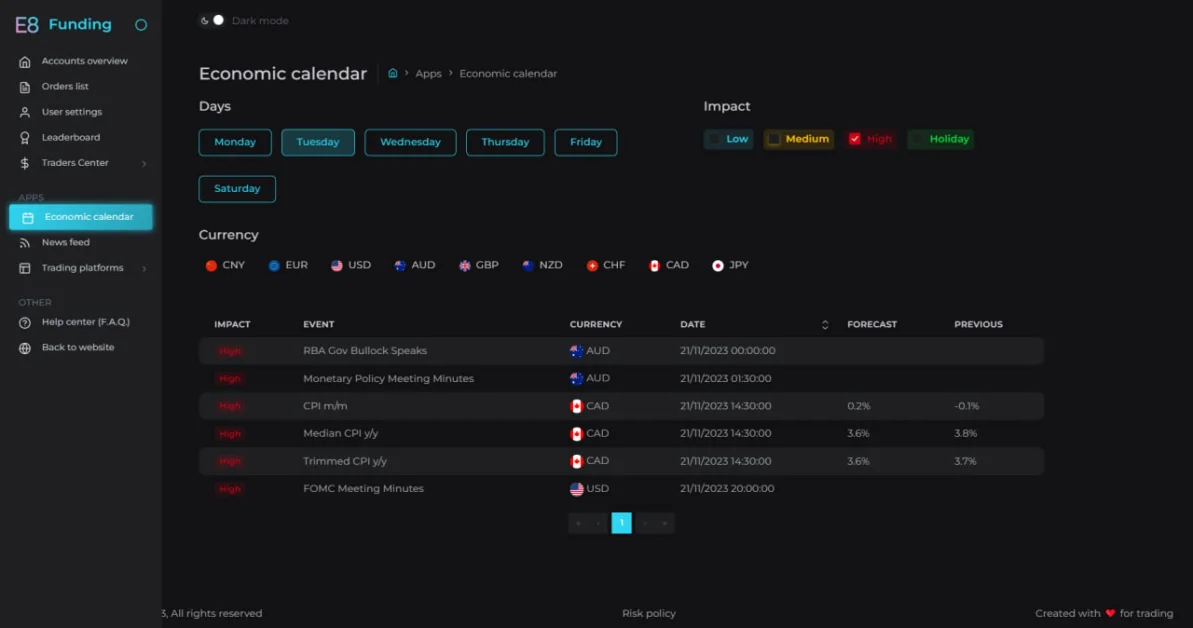Fundamental Analysis: A Pivotal Inflation Data
Last week’s financial markets witnessed a captivating clash of central bank policies, particularly involving the Reserve Bank of Australia (RBA), the Swiss National Bank (SNB), and the Bank of England (BoE). The RBA, true to its recent hawkish stance, maintained its interest rates unchanged on Tuesday, fueling trader speculation about a potential rate hike this year due to persistent inflation concerns. This hawkish sentiment propelled the Australian dollar to outperform its peers and may continue to do so if this week’s Consumer Price Index (CPI) data remains elevated. In contrast, the SNB and BoE adopted a more dovish tone in their monetary policies. The SNB surprised the market with a 25 basis points rate cut, while the BoE held its benchmark rate steady. However, the pound experienced downward pressure due to expectations that the UK has achieved its 2% inflation target, signaling the possibility of an imminent rate cut.
This week takes on exceptional significance as it brings a deluge of inflation data, notably from the US, Australia, and Canada. For each of these countries’ central banks, these data points are of paramount importance as they could offer valuable insights into upcoming rate decisions. Whether the US and Australian dollars continue their strong performance will largely depend on whether inflation remains sufficiently high to deter the Federal Reserve (Fed) and RBA from implementing easing measures. Each of the three central banks grapples with distinct challenges concerning price developments within their respective countries. While the RBA stands as the most hawkish, even contemplating a rate hike, the BoC might consider a second rate cut if this week’s CPI data falls enough to warrant such action.
Consumer Price Index in Australia ( Wednesday)
As discussed earlier, Australia finds itself at the forefront, potentially being the last major central bank to introduce monetary easing due to elevated prices. However, the question remains: will they ease at all? Currently, traders are speculating more on a possible rate hike rather than a rate cut, a sentiment that has fueled the Australian dollar’s bullish momentum in recent months. For this momentum to continue, traders need to see inflation remain persistent. As of now, the market consensus expects the inflation rate to rise to 3.8% from 3.6% in the previous month. If this consensus is met or exceeded, the bullish momentum will likely persist as the market would assign a higher probability to the RBA raising rates.
Inflation Rate and Economic Activity in Canada (Tuesday and Friday)
A starkly different scenario is anticipated in Canada, where the BoC has already implemented a rate cut. If the inflation rate continues its downward trajectory towards the bank’s 2% target, it is highly probable that the central bank will contemplate another easing and rate cut this year. The annual inflation rate in Canada moderated to 2.7% in April, in line with market expectations and marking the lowest rate of consumer price growth since March 2021. This development aligns with the BoC’s expectations that inflation should hover near 3% in the first half of the year, falling below 2.5% in the second half, reinforcing the signal that rate cuts are “getting closer.” Lower-than-expected inflation figures could trigger bearish momentum for the Canadian dollar.
Furthermore, Canada’s GDP is projected to grow by 0.3% in April 2024, as increases in manufacturing, mining, quarrying, oil & gas extraction, and wholesale trade partially offset decreases in utilities. In March, the economy remained unchanged, as per preliminary estimates. Traders closely monitor GDP data updates, as economic growth is generally beneficial for the central bank, enabling it to maintain rates for a longer duration without rushing into action due to fears of economic contraction under a tight monetary policy.
Inflation and Consumer Behavior in the United States (Friday)
Friday brings a pivotal moment with the release of the Core PCE Price Index, the Federal Reserve’s preferred inflation gauge, by the U.S. Bureau of Economic Analysis. Despite recent signs of cooling prices in the US, the Fed has maintained a hawkish stance, emphasizing the need for more data before considering monetary easing, a move that has bolstered the dollar. The Federal Reserve’s preferred gauge to measure inflation, rose by 0.2% from the previous month in April after a 0.3% increase in March, the slowest increase so far in 2024, and below market expectations of a 0.3% rise. As of today, the consensus for May’s inflation change stands at 0.1%. If the data aligns with market expectations of 0.1%, the likelihood of a more dovish Fed will increase, potentially leading to a reversal of the dollar’s current strength. According to the CME FedWatch tool, the chances of a rate cut in September are now slightly above 60%. A 0.1% reading could further bolster these odds, but a higher figure could reinforce the Fed’s hawkish stance, pushing the dollar higher.
Alongside inflation data, traders will also be watching Personal Income and Spending figures in the United States, as these provide further insights into the trajectory of inflation. High personal income, on one hand, signals robust economic activity, but on the other hand, it can be inflationary. The Fed is likely to incorporate the latest data on consumer behavior into their forecasts and planning for future monetary actions.
In conclusion, this week holds immense significance for the financial markets, with inflation data taking center stage. The decisions and commentary from central banks, along with economic data releases, will likely shape the trajectory of major currencies in the coming days. Traders are advised to stay vigilant and closely monitor these developments as they unfold.
E8X Dashboard
If you’re new to our Economic Calendar, explore our detailed guide to learn more!
The Trader’s Toolbox: Mastering the Economic Calendar
Stay ahead of key economic events and data releases with our E8X Dashboard. It’s all there under the Economic Calendar tab, offering a user-friendly interface for your convenience.

Article topics
Trade with E8 Markets
Start our evaluation and get opportunity to start earning.Disclaimer
The information provided on this website is for informational purposes only and should not be construed as investment advice. Always conduct your own research and consult with a qualified financial advisor before making any investment decisions. We do not endorse or promote any specific investments, and any decisions you make are at your own risk. This website and its content are not responsible for any financial losses or gains you may experience.
Please consult with a legal professional to ensure this disclaimer complies with any applicable laws and regulations in your jurisdiction.








